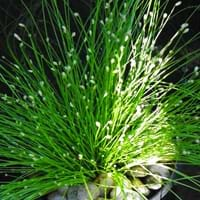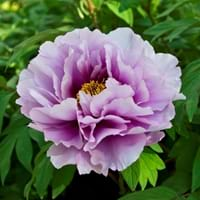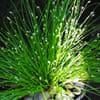Life Span
Annual
Perennial
Type
Sedge or Rush
Flowering Plants, Shrubs
Origin
Southern Europe, United Kingdom, Northern Africa
Asia, North America, Southern Europe
Types
Not Available
Aristocrat, Buckeye Belle, Henry Bockstoce , Abalone Pearl, Coral Supreme, Cytherea, Charlie's White
Number of Varieties
Not Available
Habitat
Grassland, Humid climates, Riverbanks, Wet forest
Hillside, Woods
USDA Hardiness Zone
8-11
3-9
Sunset Zone
7, 8, 9, 10, 11, 12, 13, 14, 15, 16, 17, 18, 19, 20, 21, 22, 23, 24
A3, 1a, 1b, 2a, 2b, 3a, 3b, 4, 5, 6, 7, 8, 9, 10, 11, 12, 13, 14, 15, 16, 17, 18, 19, 20, 22
Habit
Arching/Fountain-shaped
Clump-Forming
Flower Color
White
Pink, Red, White
Flower Color Modifier
Bicolor
Not Available
Fruit Color
Non Fruiting Plant
Not Available
Leaf Color in Spring
Green
Dark Green
Leaf Color in Summer
Green
Dark Green, Green
Leaf Color in Fall
Green
Bronze, Dark Green, Green
Leaf Color in Winter
Green
Not Available
Leaf Shape
Linear
Compound
Plant Season
Spring, Summer, Fall, Winter
Spring
Sunlight
Full Sun, Partial Sun, Partial shade
Full Sun, Part sun
The pH of Soil
Neutral
Neutral
Soil Drainage
Poorly Drained
Well drained
Bloom Time
Indeterminate
Spring, Summer
Tolerances
Drought
Not Available
Where to Plant?
Container, Ground, Pot
Ground, Pot
How to Plant?
Seedlings, Stem Planting
Grafting, Seedlings, Stem Planting, Transplanting
Plant Maintenance
Medium
Medium
Watering Requirements
Keep the ground moist but not water-logged, Requires regular watering, Water when soil is dry
Does not require lot of watering, It cannot sustain wet-feet, Keep the ground moist but not water-logged, Needs watering once a week, Prefer drip-irrigation instead of Over-head watering, Water occasionally
In Summer
Lots of watering
Lots of watering
In Spring
Moderate
Moderate
In Winter
Average Water
Average Water
Soil Drainage Capacity
Poorly Drained
Well drained
Sun Exposure
Full Sun, Partial Sun, Partial shade
Full Sun, Part sun
Pruning
Remove damaged leaves, Remove dead branches, Remove dead leaves
Do not prune during shooting season, Prune to control growth, Remove dead or diseased plant parts, Remove deadheads
Fertilizers
All-Purpose Liquid Fertilizer
All-Purpose Liquid Fertilizer
Pests and Diseases
Red blotch
Botrytis Blight, Leaf spot, Stem spot, Viruses
Plant Tolerance
Drought
Not Available
Flower Petal Number
Single
Semi-Double
Foliage Texture
Fine
Coarse
Foliage Sheen
Glossy
Glossy
Allergy
Asthma, Skin irritation
Not Available
Aesthetic Uses
Beautification
Beautification, Bouquets, Showy Purposes, Used for decorating walls, fences, gates, hedges, etc.
Beauty Benefits
Not Available
Not Available
Environmental Uses
Air purification
Air purification
Medicinal Uses
Digestion problems, Fever
Cough, Gout, Headache, Heartburn, Kidney problems, Upset stomach, Urinary tract problems
Part of Plant Used
Whole plant
Flowers, Root, Seeds
Other Uses
Showy Purposes, Used as Ornamental plant
Showy Purposes, Used as Ornamental plant, Used for fragrance
Used As Indoor Plant
Yes
No
Used As Outdoor Plant
Yes
Yes
Garden Design
Bog Garden, Container, Edging, Rock Garden / Wall
Feature Plant, Foundation, Mixed Border
Botanical Name
ISOLEPIS cernua
Paeonia suffruticosa
Common Name
Low Bulrush
Slender Clubrush
Peony
In Hindi
फाइबर ऑप्टिक घास
Peony
In German
Lichtwellenleiter-Gras
Pfingstrose
In French
Fibre optique Herbe
Pivoine
In Spanish
Hierba de fibra óptica
Peonía
In Greek
Οπτικών Ινών Grass
παιωνία
In Portuguese
Fibra Óptica Relva
Peônia
In Polish
Światłowody Trawa
Piwonia
In Latin
Fiber opticus Grass
AGLAOPHOTIS
Phylum
Not Available
Magnoliophyta
Class
Not Available
Magnoliopsida
Order
Poales
Not Available
Family
Cyperaceae
Paeoniaceae
Clade
Angiosperms, Commelinids, Monocots
Angiosperms, Core eudicots, Eudicots
Tribe
Not Available
Not Available
Subfamily
Pooideae
Not Available
Importance of Fiber Optic Grass and Peony
Want to have the most appropriate plant for your garden? You might want to know the importance of Fiber Optic Grass and Peony. Basically, these two plants vary in many aspects. Compare Fiber Optic Grass and Peony as they differ in many characteristics such as their life, care, benefits, facts, etc. Every gardener must at least have the slightest clue about the plants he wants to plant in his garden. Compare their benefits, which differ in many ways like facts and uses. The medicinal use of Fiber Optic Grass is Digestion problems and Fever whereas of Peony is Cough, Gout, Headache, Heartburn, Kidney problems, Upset stomach and Urinary tract problems. Fiber Optic Grass has beauty benefits as follows: Not Available while Peony has beauty benefits as follows: Not Available.
Compare Facts of Fiber Optic Grass vs Peony
How to choose the best garden plant for your garden depending upon its facts? Here garden plant comparison will help you to solve this query. Compare the facts of Fiber Optic Grass vs Peony and know which one to choose. As garden plants have benefits and other uses, allergy is also a major drawback of plants for some people. Allergic reactions of Fiber Optic Grass are Asthma and Skin irritation whereas of Peony have Not Available respectively. Having a fruit bearing plant in your garden can be a plus point of your garden. Fiber Optic Grass has showy fruits and Peony has no showy fruits. Also Fiber Optic Grass is not flowering and Peony is flowering. You can compare Fiber Optic Grass and Peony facts and facts of other plants too.





